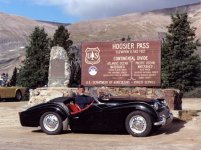Don't take it too lightly, you only get one pair of lungs
But, there are other considerations regarding the integrity of the weld
The requirements to weld galvanized steel raises three questions.
What procedures must be modified or employed to maintain the integrity and quality of the weld?
What precautions should be taken to protect the welder from zinc fumes?
How should the weld be repaired to maintain the integrity of the galvanized coating?
1. Weld Procedures
If molten zinc gets into the molten weld metal, it can cause inferior welds and weld cracking. For structural quality welds the zinc should be removed in the immediate area of the weld and within 15 mm of either side of the weld. This can be done by:
i) grinding the zinc off.
ii) chipping heavier zinc coatings off with a chipping hammer or a chisel.
iii) burning the zinc off with an oxy‑acetylene torch; such as would occur during bevelling to prepare the material. (Adequate ventilation should be provided ‑ see Zinc Fume.)
For non-critical welds when hotter burning welding rods are used, the heat of the welding process can vaporize the zinc before it can run into the weld metal. The following procedures are recommended to reduce the availability of molten zinc near the weld.
i) Prepare the bevels to eliminate the formation of a reservoir of molten zinc between the fraying surfaces at the root of the weld metal.
ii) Slightly increase the size of the gap at the root of the weld.
iii) Use a whipping motion to burn the zinc off ahead of the weld.
iv) Use a slightly slower travel speed.
The publication "Welding Zinc‑Coated Steel" published by the American Welding Society, Inc. provides excellent detailed information on the recommended procedures to weld galvanized steel. The American Hot Dip Galvanizers Association reprints from the Welding Journals provide additional information.
2. Zinc Fume
While zinc fume is non‑toxic, excessive dosages can result in zinc fume fever ‑ an extremely unpleasant reaction with symptoms that resemble a serious fever. However, recovery is generally rapid and there appears to be no long‑term affects from zinc fumes. Mechanical or natural ventilation or an approved respirator and eye protection should be utilized when welding galvanized steel. Of course, removing the zinc before welding will significantly reduce this concern. Drinking milk can both reduce the risk of getting zinc fume fever, and also reduce the fever if you have it.
The following respiratory equipment will provide the necessary protection when welding and/or cutting galvanized steel.
Respirator: #1 North 77BP Low profile type, fits under a welding helmet
#2 North 7700 Half mask type, for use with cutting goggles
#3 North 7190 Disposable, low profile type, fits under a welding helmet
Cartridges: Use with #1 and #2 above #1 North 7500-8 Dusts, fumes, mists and radionuclides (zinc fumes)
#2 North 7500-81 Organic vapors, dusts, fumes, mists, radionuclides, radon daughters; paint, laquer and enamel mists; and pesticides
(Dual protection when zinc and paint fumes are present)
3. Repair
Repair procedures are well specified in ASTM A780. In addition, our "Specification for Hot Dip Galvanizing", "Repair Procedures #27" in our in‑house training program, and "Field Repair Procedure" in this brochure, specifically detail how to repair damaged galvanized steel. It should be noted that in addition to the repair, the zinc adjacent to the damaged area will provide cathodic protection which unlike paint films, will prevent underfilm corrosion of the adjacent material and will significantly retard corrosion of the bare areas.

 Hey there Guest!
Hey there Guest!
 smilie in place of the real @
smilie in place of the real @
 Pretty Please - add it to our Events forum(s) and add to the calendar! >>
Pretty Please - add it to our Events forum(s) and add to the calendar! >> 

 A friendly reminder - be careful what links you click on here. If a link is posted by someone you don't know, or the URL looks fishy, DON'T CLICK. Spammers sometimes post links that lead to sites that can infect your computer, so be mindful what you click.
A friendly reminder - be careful what links you click on here. If a link is posted by someone you don't know, or the URL looks fishy, DON'T CLICK. Spammers sometimes post links that lead to sites that can infect your computer, so be mindful what you click.